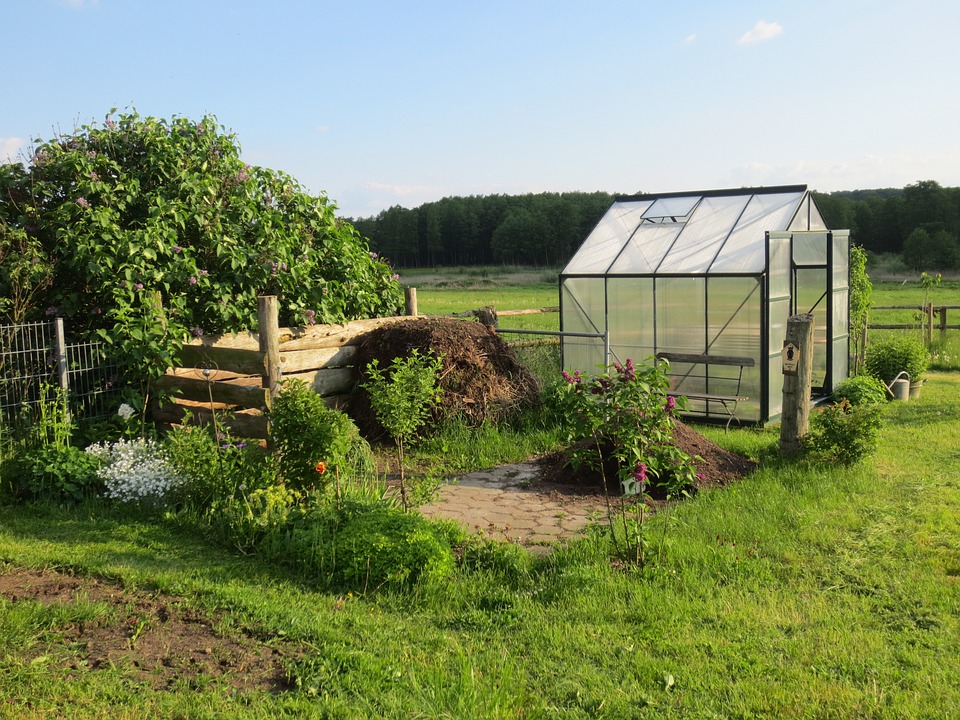Introduction
Permaculture, a holistic approach to designing sustainable systems, has been gaining momentum in recent years as people strive for more environmentally friendly and self-sufficient ways of living. One innovative aspect of permaculture is the use of greenhouse gardens, enabling individuals and communities to grow food year-round and in various climates. In this article, we will explore the concept of permaculture, the benefits of greenhouse gardens, and how this innovative method is transforming the way we grow and consume food.
The Power of Permaculture
Permaculture is all about observing and mimicking nature to create harmonious and sustainable systems. By studying natural ecosystems, permaculturists design landscapes that work with nature rather than against it. This approach ensures that resources, such as water, energy, and nutrients, are utilized efficiently and effectively.
In a permaculture garden, diversity is key. By incorporating diverse plant species, soil microorganisms, and beneficial insects, a self-sustaining ecosystem is created. This approach reduces the reliance on external inputs, such as synthetic fertilizers and pesticides, leading to healthier and more resilient plants.
The Rise of Greenhouse Gardens
While traditional gardening is limited to specific growing seasons and climates, greenhouse gardens offer a game-changing solution. A greenhouse is a structure made of transparent materials, such as glass or plastic, that captures and retains heat from the sun, creating a warmer and more controlled environment for plants.
Greenhouse gardens extend the growing season, allowing for year-round cultivation of various crops. With the ability to control temperature, humidity, and light exposure, gardeners can create an optimal environment for plants to thrive, regardless of the weather conditions outside.
Furthermore, greenhouse gardens can be adapted to different climates, providing opportunities for food production in areas where it would otherwise be challenging or impossible. This is particularly beneficial in colder regions or areas with short growing seasons, as plants can be started earlier indoors and transplanted to the greenhouse when the weather permits.
The Benefits of Greenhouse Gardens
The use of greenhouse gardens offers numerous advantages:
1. Year-round food production
Greenhouse gardens provide a continuous supply of fresh produce, ensuring food security and reducing the reliance on imported foods. This is especially valuable in regions where access to fresh and nutritious produce is limited.
2. Higher crop yields
The controlled environment inside a greenhouse allows for optimal growing conditions, resulting in increased crop yields. With careful planning and utilization of vertical growing space, greenhouse gardens enable efficient use of land and maximize productivity.
3. Protection from pests and diseases
Greenhouses act as a physical barrier, protecting plants from pests, diseases, and extreme weather events. This reduces the need for chemical interventions and promotes natural pest control methods, such as maintaining a diverse ecosystem of beneficial insects.
4. Water conservation
By capturing and recycling water within the greenhouse, the amount of water required for irrigation can be significantly reduced. Additionally, the controlled environment minimizes the risk of water loss through evaporation, ensuring efficient water usage.
FAQs
Frequently Asked Questions About Greenhouse Gardens
1. What types of crops can be grown in a greenhouse?
A wide variety of crops can be grown in greenhouse gardens, including leafy greens, tomatoes, cucumbers, herbs, and even tropical fruits. The key is to select plants that are well-suited to the specific growing conditions within the greenhouse.
2. How much maintenance do greenhouse gardens require?
Maintenance requirements will vary depending on the size and complexity of the greenhouse garden. Generally, regular monitoring of temperature, humidity, and watering is necessary. Additionally, pest control, pruning, and fertilization may be required. However, with good planning and proper design, maintenance can be minimized.
3. Are greenhouse gardens expensive to set up?
The cost of setting up a greenhouse garden can vary greatly depending on factors such as size, materials used, and additional features. While there may be initial costs involved, such as purchasing the greenhouse structure and equipment, the long-term benefits, such as increased yields and reduced food expenses, often outweigh the initial investment.
4. Can greenhouse gardens be environmentally friendly?
Absolutely! Greenhouse gardens can be designed to be environmentally friendly by utilizing sustainable practices. For example, incorporating rainwater harvesting systems, using organic fertilizers and pest control methods, and optimizing energy usage through passive solar design can all contribute to an eco-friendly greenhouse garden.
Conclusion
Greenhouse gardens are revolutionizing the way we approach food production and consumption. By embracing the principles of permaculture and harnessing the advantages of environment-controlled structures, individuals and communities can create sustainable, high-yielding, and resilient growing systems. With greenhouse gardens, the power of permaculture is unleashed, paving the way for a greener and more self-sufficient future.




